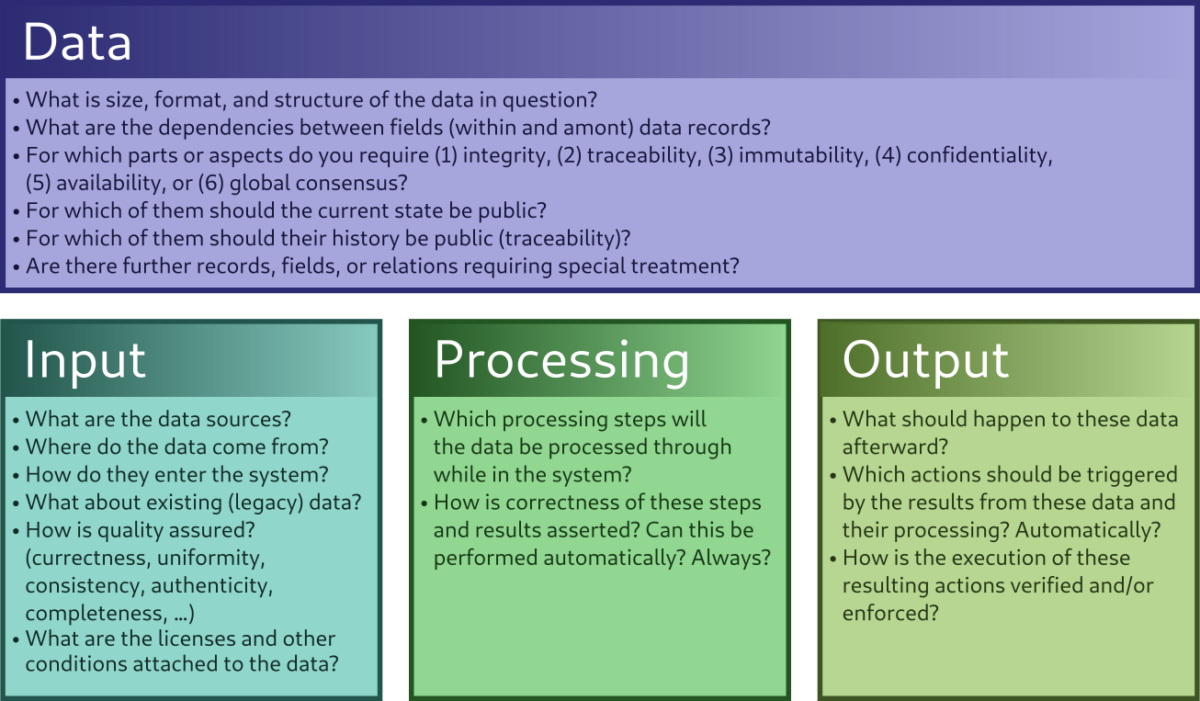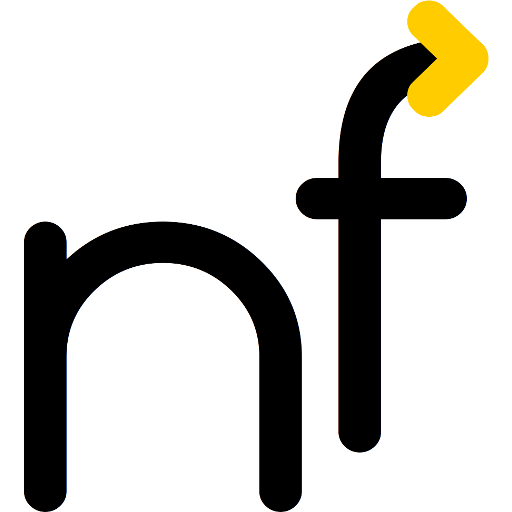In any data-centric applications, understanding the data lifecycle (also as part of the product lifecycle) is important, especially when trust or traceability are also goals. If Blockchain should play a role, then the requirements associated with the data lifecycle can even become a decisive factor: Either adapt the data model or the processes, or, if that is impossible, limit Blockchain use to selected areas or entirely abolish it.
More on blockchain in the simple, humorous, yet thorough article «Hitchhiker’s Guide to the Blockchain». A German 🇩🇪 version of this article, entitled “Fragen zum Datenlebenszyklus, nicht nur für Blockchains“, is also available.
From my experience, the following questions are key to understanding the lifecycle if trust, transparency, and/or traceability are involved. A more detailed list is below and can also be downloaded as a PDF.
- Data: Which data with which properties are we dealing with (structure, dependencies, data security/protection)?
- Criteria: Are integrity, traceability, immutability, confidentiality, or global consensus required?
- Input: What are the data sources? How does data get into the system?
- Quality: How is quality assured (korrectness, uniformity, authenticity, completeness, …)?
- Culture of failure: What can/may/must happen, if erroneous data finds its way into the system (accidentally or maliciously)?
- Data protection: How to deal with requests for data correction/deletion?
- Format changes: How should future changes in format or structure be handled?
- Processing: What are the data processing steps?
- Trust: Might there be persistent mistrust among actors? Can this mistrust be managed by hierarchies or contracts?
- Output: What should be the results of this data?
- Effects: What will (automatically) happen based on this data?
- End of life: Is there an end-of-life for the data? What should happen then?
- Universality: Do all records, fields, and relationships share the same of the above properties?
The answers to this list (or to the questionnaire) can then be used as input to the flow diagram to the right.



